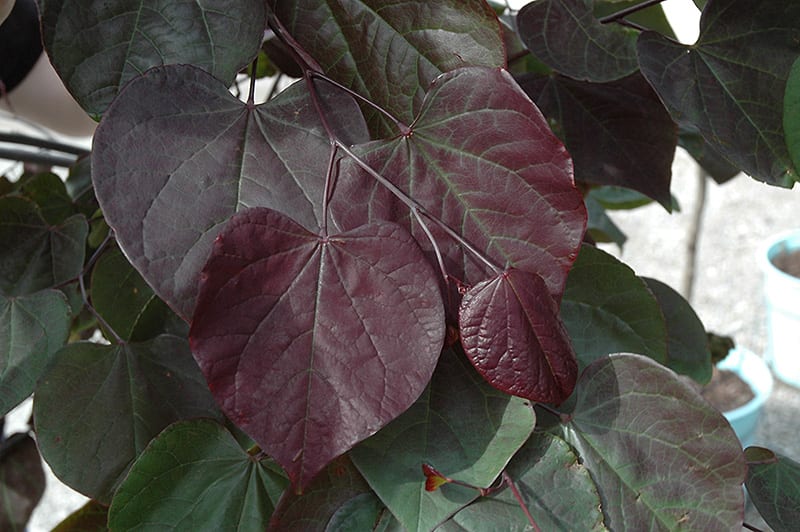Burgundy Hearts® Redbud
A spectacular and hardy spring bloomer, with very showy fuchsia flowers held tightly on bare branches in early spring; red-purple foliage emerges maturing to burgundy; a great small ornamental tree for specimen use in the landscape.
Please contact your local store for product availability.
Find a garden center near you.
Species: canadensis
Other Species Names: Eastern Redbud, Judas Tree, Love Tree
Plant Height: 300 in.
Spread: 360 in.
Evergreen: No
Plant Form: round
Emergent Foliage Color: brick red
Summer Foliage Color: burgundy
Minimum Sunlight: partial shade
Maximum Sunlight: full sun
Burgundy Hearts® Redbud has fuchsia pea-like flowers along the branches from early to mid spring before the leaves. It has attractive burgundy foliage which emerges brick red in spring. The heart-shaped leaves are highly ornamental and turn yellow in fall. The fruit is not ornamentally significant.
Burgundy Hearts® Redbud is a deciduous tree with a more or less rounded form. Its relatively coarse texture can be used to stand it apart from other landscape plants with finer foliage.This is a relatively low maintenance tree, and should only be pruned after flowering to avoid removing any of the current season's flowers. Deer don't particularly care for this plant and will usually leave it alone in favor of tastier treats. Gardeners should be aware of the following characteristic(s) that may warrant special consideration;DiseaseBurgundy Hearts® Redbud is recommended for the following landscape applications;AccentMass PlantingGeneral Garden Use
Burgundy Hearts® Redbud will grow to be about 25 feet tall at maturity, with a spread of 30 feet. It has a low canopy with a typical clearance of 3 feet from the ground, and is suitable for planting under power lines. It grows at a medium rate, and under ideal conditions can be expected to live for 60 years or more.This tree does best in full sun to partial shade. It prefers to grow in average to moist conditions, and shouldn't be allowed to dry out. It is not particular as to soil type or pH. It is highly tolerant of urban pollution and will even thrive in inner city environments, and will benefit from being planted in a relatively sheltered location. Consider applying a thick mulch around the root zone in winter to protect it in exposed locations or colder microclimates. This is a selection of a native North American species.

